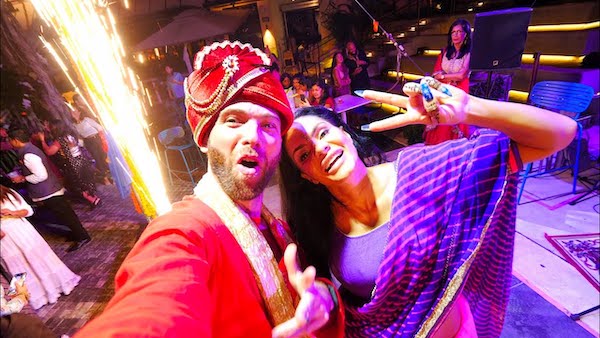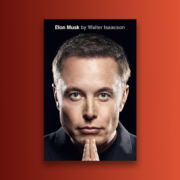Diwali Comes of Age in America — a Long Way From the Time When I First Moved Here 30 Years Ago
- The Festival of Lights has become the identity marker that not only connects with a distant past but ensures continuities for a new generation of diasporic Indians.

An American student in my Cultures of India class at the University of California, Santa Cruz, asked me if she could write a research paper on Diwali. She is in charge of organizing a Diwali party at her corporate office in the Bay Area and is fascinated by the festival. When I came to the United States three decades ago, hardly anyone talked about Diwali. Now, with about 3 million Indian Americans, a sizable number in every state, there is a curiosity about the feasts and festivals they celebrate. More and more, students of diverse backgrounds participate in Holi and Diwali celebrations on their university campuses.
Diwali, in particular, has become mainstream. When Obama became the first president to celebrate Diwali at the White House in 2009, Desis were thrilled. Every newspaper in India and the diaspora flaunted the news on social media. The U.S. postal service even issued a Diwali postage stamp a few years ago. This year the Diwali stamp is put on the list of Forever stamps, which will remain equal in value to the current First-Class Mail. Recently The New York Times showcased Diwali sweets stores all over the U.S. in its food section.

This year Diwali was celebrated on Monday, Oct 24th, exactly 20 days after the Vijaya Dashami (Durga Puja), according to the lunar calendar. It is held in Kartika masa (October – November), the most auspicious month for the Hindus.
Diwali is associated with numerous myths —the return of Ram, his wife Sita, and his brother Lakshman to the Ayodhya kingdom after 14 years of exile; and the return of the Pandavas as per Mahabharata.
In Odisha, Goddess Lakshmi is worshiped on Diwali. She stands for wealth, good fortune, and personal well-being. In some regions of the state, Lakshmi puja is the major attraction of Diwali. Dhenkanal, a small city about 60 km from Cuttack, is mainly known for the famous Lakshmi puja. In 2019, I had the good fortune of being there to see Laksmi medhas (pandals) all over the city on Deepavali day. In western India, the legend goes that Lord Vishnu, in his 5th incarnation as Vamana, rescued Lakshmi from the prison of King Bali. Merchants close their books of the year past in northern India and start the new year with new accounts on Diwali day.
Diwali is celebrated as the festival of triumph, glory, and a new beginning. As per the legend, after a 14-year exile, when Ram, along with his brother Lakshman and wife Sita, returned to their kingdom Ayodhya, people celebrated by lighting lamps. As a result, the day is remembered as a family reunion, a collective celebration of justness and order.
Diwali is also known as Kartika Amavasya; on this day, the Pancha Pandavas from the epic Mahabharata returned to their kingdom Hastinapur after 12 years of exile. People celebrated the day by lighting thousands of earthen lamps and distributing sweets. In southern India, Deepavali stands for the victory of Lord Krishna fighting the demon Narakasura.
Even though Diwali is celebrated differently in different cultural regions of India, these stories recount the triumph over evil and the celebration of a new beginning. On this day, Hindus clean their house, draw rangolis in front of their homes, wear new clothes, visit their friends and relatives, exchange sweets and light diyas (lamps) in the evening, and burst firecrackers to illuminate the year’s darkest night.
Gods and Goddesses are greeted with sweets. On Diwali, special sweets are prepared. In Cuttack, the sweets stores are everywhere. A particular caste group known as gudias is traditionally engaged in sweet making. There used to be a family-run mithai store on Ranihat square, a five-minute walk from my home in Cuttack. On my way to the primary school, I would watch the whole family, busy making sweets like laddoos, jalebis, chhena gaja, Kalakand, and plain and sweetened puffed paddy (khai and ukhuda). On Diwali, they will make unique animal-shaped sweets, e.g., elephants, horses, and cows, all made of sugar. These animals looked very enticing, tied to colorful threads and hanging from the ceiling. On that day, I would accompany my father to choose my favorite sweets.
In my childhood, firecrackers were one of the defining features of Diwali. My father would buy a medley of firecrackers like sparklers, chakkars, flower pots, rockets, pencils, twinkling stars, and a bunch of talaphotka (crackers made from palm leaf). Nowadays, more powerful firecrackers use all kinds of chemicals and become life-threatening. Local-made crackers have been replaced by ones made in China. Many people use these toxic firecrackers, and the horrendous bursts last the night. Several state governments in India have restricted firecrackers use until a specific time of the night to control noise pollution and disturbance beyond sleep time.
The best part of the event was lighting the lamps in the evening. When twilight hit, my mother would get the earthen lamps ready, filled with castor oil and cotton wicks to burn the longest. It would look like the ray of lights welcoming the Pandavas, King Ram, and his kin and inviting Goddess Laksmi to brighten the household and bless us with good food and life. This Summer, when I was in Cuttack, I visited my favorite family-run earthen lamp store and discovered that they no longer make lamps; instead, they import them from China.
On Diwali, family ancestors are remembered and invited to partake in the festivities. It is called Paya shraddha. In the evening, family members in my neighborhood light Kaunria (jute sticks) sticks, point them to the sky, and call on their ancestors. It is known as Bada Badia Daka.
When I moved to the U.S. and settled in the Bay Area in 1989, I did not know of any Diwali celebrations. I started a Diwali party in Santa Cruz with lighted earthen lamps and lots of Indian food and opened our doors to Indian and non-Indian friends. We shared food and exchanged love and friendship to help me and my children integrate into this foreign land. My husband and I wanted our young boys to understand the festival’s value and be proud of our culture while growing up in America.
In the diaspora, all religious festivals are generally observed at the temples. In the 1980s, there were only two Hindu temples, in Fremont and Livermore. In the last 30 years, the number of temples has grown exponentially. Desi families flock to the temples with their children. Diwali becomes the busiest time for the sweet sellers in the community and pundits at the temples. Parents tell stories from Ramayana and Mahabharata to embed their children in the Hindu tradition.
One can see that Hindus from different regions of India in the diaspora have brought their Gods and Goddesses enshrined in temples built all over the United States. A widespread tradition like Diwali becomes the identity marker that not only connects with a distant past but ensures continuities for a new generation of diasporic Indians.
Annapurna Devi Pandey teaches Cultural Anthropology at the University of California, Santa Cruz. She holds a Ph.D. in sociology from Jawaharlal Nehru University, New Delhi, and was a postdoctoral fellow in social anthropology at Cambridge University, the U.K. Her current research interests include diaspora studies, South Asian religions, and immigrant women’s identity-making in the diaspora in California. In 2017-18 she received a Fulbright scholarship for fieldwork in India. Dr. Pandey is also an accomplished documentary filmmaker. Her 2018 award-winning documentary “Road to Zuni,” dealt with the importance of oral traditions among Native Americans.



you have polluted India with chemicals in the air and now you want this disease of pollution in other country. you enjoy devali but not crackers the polite the air, disturbance to others and uncomfortable situation.